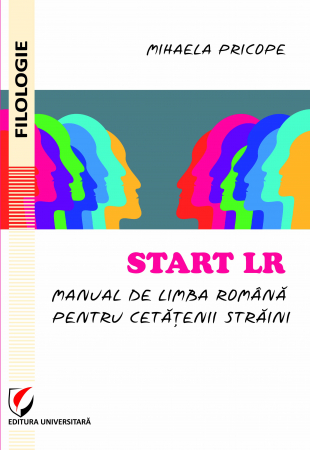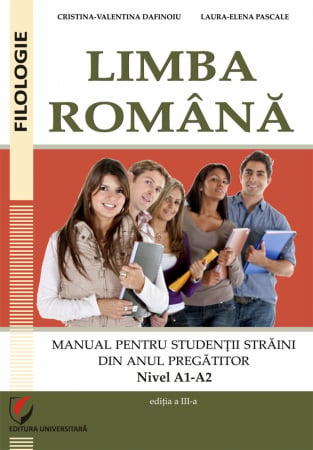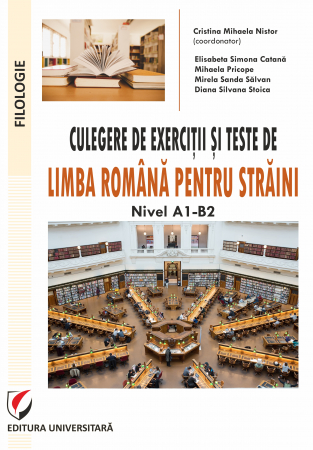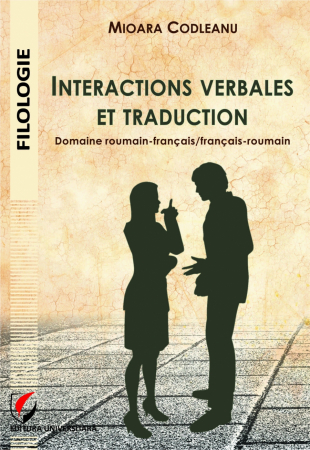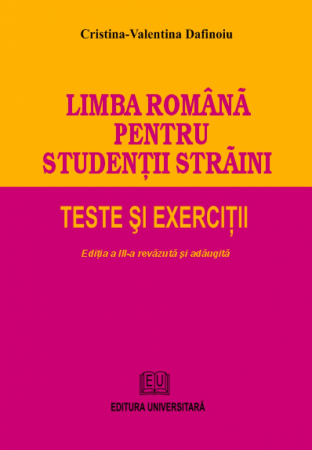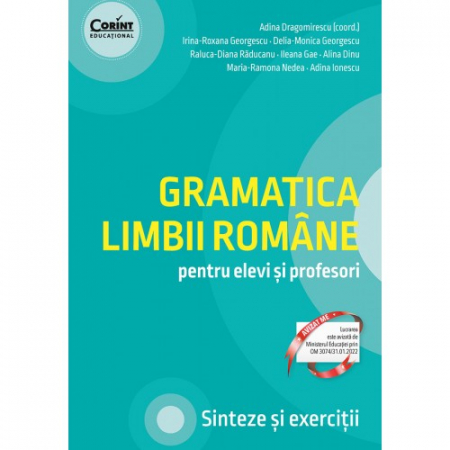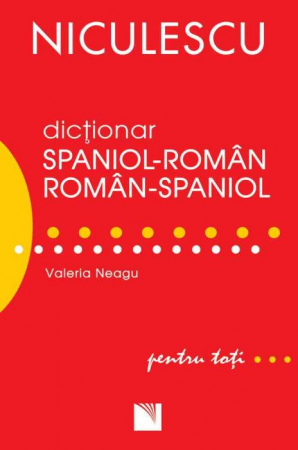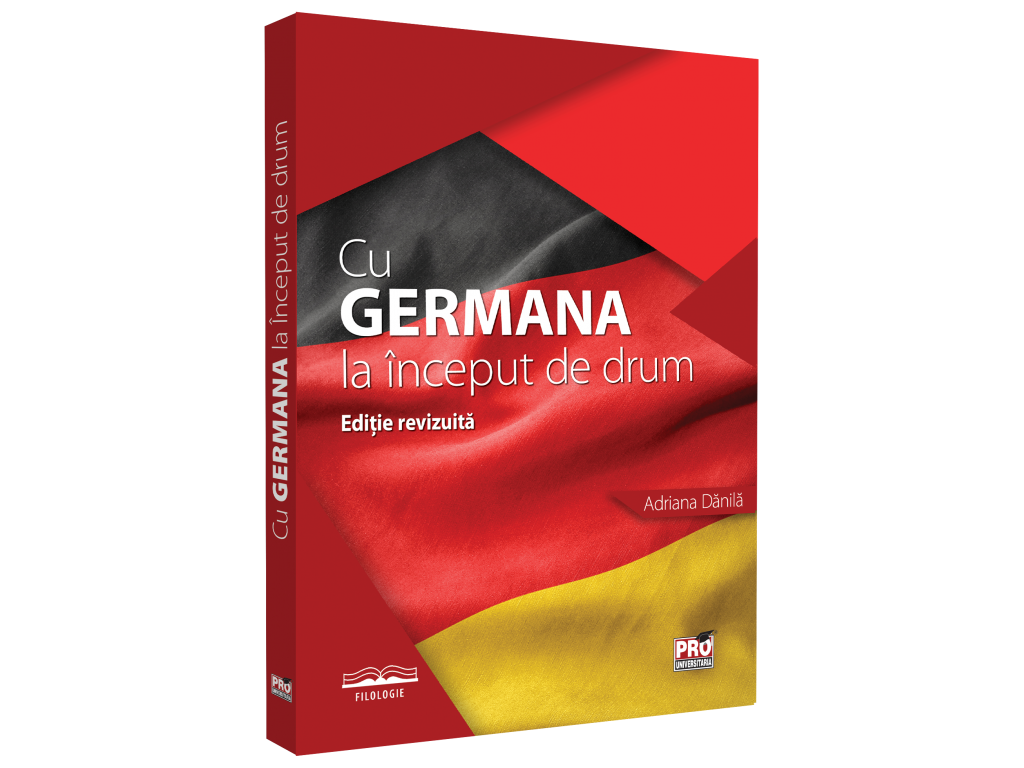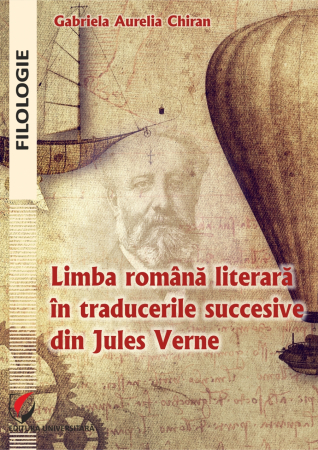ISBN: 978-606-28-0182-3
DOI: 10.5682/9786062801823
Publisher year: 2015
Edition: I
Pages: 287
Publisher: Editura Universitară
Author: Aurelia Bajan Stancu
- Description
- Download (1)
- Authors
- Content
- More details
- Reviews (0)
Aurelia Bajan Stancu proposes for study a topic of great and permanent relevance in interpersonal communication, with a direct impact on one of the areas with great problems at the macrosocial level - educating young generations in a formal, institutionalized system.
The premise from which the whole research starts is that, among the causes of the unanimously recognized inefficiency of our current pre-university education system, the deficient didactic communication occupies a central place, along with the infrastructure problems (material endowment, conditions of the formative process, etc.). and teaching strategies (designing curricula and curricula).
Consequently, a more detailed knowledge of the typology of factors that constitute language barriers, in the development of verbal interactions that have as main actors the teacher, on the one hand, and students, on the other hand, and the mechanisms that generate these communication barriers. Verbal is more than necessary for the design of a strategy to remedy the above-mentioned states.
Petre Gheorghe Barlea
-
Bariere lingvistice in comunicarea didactica
Download
AURELIA BAJAN STANCU
TABLE OF CONTENTS / 5
The linguistic component of the communication barriers (P.Gh.Bârlea) / 9
LOGOS AND ABBREVIATIONS / 14
PART I / 15
The didactic context of communication barriers / 15
1. INTRODUCTION / 15
1.1. Argument / 15
1.2. Research stage / 15
1.3. Working methods / 25
1.4. Working material / 28
1.5. Terminological specifications / 31
2. DIDACTIC DISCOURSE / 31
2.1. Didactic language = pedagogical language? / 31
2.2. Speech / text - concordances and differences / 33
2.3. Linguistic peculiarities of the didactic discourse / 37
3. COMMUNICATION BARRIER / 42
3.1. Typology of communication barriers / 42
3.2. Typology of barriers in didactic communication / 45
3.3. Communication barriers of a linguistic nature / 47
PART II / 53
Structural-formal perspective in the analysis of didactic discourse / 53
1. INTERROGATIVE STATEMENTS, SOURCES OF LANGUAGE BARRIERS / 53
1.1. The typology of interrogative utterances, generating linguistic barriers / 53
1.1.1. Total questions / 54
1.1.2. Partial questions / 55
1.1.3. Alternative questions / 56
1.1.4. Language barriers produced by the use of questions with interrogative syntax / 57
1.1.4.1. Questions for an explanation / 58
1.1.4.2. Questions requesting additional information / 60
1.1.4.3. Modified questions / 61
1.1.5. Questions with non - interrogative syntax, source of linguistic barriers / 63
1.1.5.1. Declarative structures / 63
1.1.5.2. Imperative structures / 66
1.1.6. Linguistic barriers identified in “non-question” speech acts / 68
1.1.6.1. Rhetorical questions / 69
1.1.6.2. Rejection questions / 72
1.1.6.3. The interrogations repro / 73
1.1.7. Directive speech acts, generating language barriers / 74
1.1.7.1. Confirmation questions / 75
1.1.7.2. Questions with fatigue function / 77
1.2. Linguistic barriers identified in the structure of interrogative sentences / 83
1.2.1. Phonetic structures that produce linguistic barriers at the level of interrogative utterances / 85
1.2.2. Semantic structures that impede the efficiency of interrogatives / 89
1.2.3. Syntactic structures generating language barriers / 93
1.3. The pragmatics of the linguistic barriers identified in the interrogative structures / 98
1.4. Conclusions regarding the linguistic barriers generated by the 110 interrogative statements of the didactic dialogue
2. DIDACTIC EXPLANATION, GENERATORS OF LANGUAGE BARRIERS / 112
2.1. Typology of explanation, source of language barriers / 112
2.2. Linguistic barriers identified in the compositional structure of the explanation / 129
2.3. Phonetic, lexical, morpho-syntactic, rhetorical-stylistic structure of the explanation / 145
2.3.1. Phonetic structures generating errors in explanation / 145
2.3.2. Lexical-semantic structures that encumber the didactic explanation / 147
2.3.3. The morpho-syntactic level of the linguistic barriers in the didactic explanation / 148
2.3.4. Rhetorical structure incompatible with efficient didactic explanation / 151
2.4. Conclusions regarding the linguistic barriers in the structure of the explanation 153
3. DIDACTIC CONVERSATION / 154
3.1. The typology of the didactic conversation, generating linguistic barriers / 154
3.2. The structure of the didactic conversation, the source of the linguistic barriers / 160
3.2.1. Linguistic barriers identified at the macrostructural level of the didactic conversation / 161
3.2.2. Linguistic barriers identified at the microstructural level / 177
3.2.2.1. The cooperative principle / 184
3.2.2.1.1. Linguistic barriers generated by the violation of the quantity requirement / 185
3.2.2.1.2. Linguistic barriers generated by the violation of the quality requirement / 187
3.2.2.1.3. Linguistic barriers generated by the violation of the relevance requirement / 189
3.2.2.1.4. Linguistic barriers generated by the violation of the manner requirement / 190
3.2.2.2. The principle of politeness / 193
3.2.2.2.1 Failure to comply with the rule of formality / 193
3.2.2.2.2. Violation of the hesitation rule / 195
3.2.2.2.3. Violation of the equality rule / 196
3.3. Conclusions regarding the linguistic barriers generated by the didactic conversation / 198
PART IV / 227
Psycho-behavioral sources of language barriers / 227
1. Sanctioning by the teacher of some wrong answers of the students, without being given additional information or the correct variant / 227
2. Excessive personalization of statements / 229
3. Exaggerated, derogatory reactions of the teacher, in case of wrong answers / 23
4. Verbal formulas that create a certain psychic pressure on students / 231
5. Uncontrolled use of expressions, interjections, parasitic words, verbal tics / 231
6. Absence of linguistic marks of evaluation / 231
CONCLUSIONS / 233
BIBLIOGRAPHY / 237
TEXT CORPUS / 252
ABSTRACT / 286
Aurelia Bajan Stancu proposes for study a topic of great and permanent relevance in interpersonal communication, with a direct impact on one of the areas with great problems at the macrosocial level - educating young generations in a formal, institutionalized system. The premise from which the whole research starts is that, among the causes of the unanimously recognized inefficiency of our current pre-university education system, the deficient didactic communication occupies a central place, along with the infrastructure problems (material endowment, conditions of the formative process, etc.). and teaching strategies (designing curricula and curricula). More precisely, the author considers that what could, however, be transmitted to students through didactic and scientific discourse - oral and written -, under the given conditions, is undermined by serious deficiencies in grammatical and stylistic-rhetorical organization of these types of communication. . Consequently, a more detailed knowledge of the typology of factors that constitute "language barriers" in the development of verbal interactions that have as main actors the teacher, on the one hand, and students, on the other hand, and the mechanisms that generate these barriers. Verbal communication is more than necessary to design a strategy to remedy the above-mentioned factual states. The book has, therefore, a first merit by the very fact that it tries to systematize and analyze acts of language with a specific that everyone knows, in principle, about which generalizations are made, but no one has examined them. concretely, according to a somewhat coherent work paradigm. According to our science, Aurelia Bajan Stancu's work is the first attempt of this kind in Romanian literature (understanding by "specialty" the linguistic perspective, aiming at explanations regarding didactic communication, as well as psycho-pedagogical perspective, based on the verbal communicative element.) the Romanian and foreign profile bibliography is enunciated, sporadically, the concept of “linguistic barrier”, but nowhere is exceeded the stage of enumerating some examples that reflect nothing but particular and minimal hypostases of the ample, complex, extremely dynamic phenomenon designated by the respective phrase. On the other hand, from the whole approach one feels the deep attachment of the author to the whole field targeted by the subject treated in this book.
Of course, these two observations cannot replace the evaluation of the qualities of the content itself and of the formal qualities of the work, but they represent an encouraging benchmark for the value judgments that must be made. As expected, the "barriers" that the author talks about are manifested in the process of speaking, but they are not strictly linguistic, because the psychological, sociological implications, etc. become evident from the first level of analysis. This is the reason why the whole typology of language facts subject to systematic examination is subsumed to the general theory of didactic discourse, presented in part I of the book, after an introduction to the field (working methods, selection of corpora of texts, etc.) and before the proposal. classification of communication barriers in general.
The second part of the paper, the most consistent in the economics of the approach undertaken by Aurelia Stancu, deals with the proposed subject from the structural-formal perspective of the organization of the didactic discourse. More precisely, the sources of interruption or total obstruction of the verbal communicative flow in three main types of discursive structures from the sphere of didactic communication are targeted: the usual interrogative utterances in the teaching-learning acts; explanatory statements; the structures of dialogue, in what is called "didactic conversation". Regarding the construction of interrogations, the author shows first to what extent its general typology has its usual correspondents in the teaching act, which are the usual subtypes in practice at the department, noting that a first source of communication barriers at this level is the overbidding of a certain categories of questions to the detriment of others. Thus, the “closed” questions (with a possible unique answer, of the “Yes” / “No” type), the questions with non-interrogative syntax, the rejection or reproach questions are much too frequent in the samples of lessons recorded “live” by the author , in relation to the questions requesting some explanations, some additional information, with the “modalized” questions, which should support an active and creative participation in the didactic dialogue. Second, the internal sources of the dysfunction of interrogative structures are analyzed, from the inappropriate use of the interrogative pronoun / adverb to various morphosyntactic negligences, and from here, to unjustified topical inversions and ignoring the requirements of using suprasegmental morphemes - respectively, intonation and accent (logical, in this case).
In the same way the area of using the didactic explanation is described. Comparable to the scientific demonstration, it has, however, specific elements, determined by the obligation to apply the principle of accessibility, depending on the age categories of students, the potential of the class they work with, the more or less abstract content of scientific items to be explain etc. Again, the analysis is done from two perspectives, complementary, of course: a) the surface, compositional, rhetorical-discursive level of the explanatory sequences; b) the level of depth, of the grammatical, lexico-semantic and phonetic mechanisms through which the respective constructions are generated. Finally, the two types of partial structures combine in the third part, which should represent the culmination of the communicative act in the educational context: the didactic conversation. In principle, the concept should be synonymous with "heuristic conversation", in the sense that it should lead the student to the scientific truth from close to close, through well-placed questions, through small helpful explanations, by correcting and correcting. skill of wrong answers etc. Detecting the defining features of a notion, based on the analysis of previously given examples and, finally, formulating its scientific definition, understanding the mechanisms of a process or phenomenon are operational tasks that can be very effectively accomplished through didactic conversation. Unfortunately, the corpus of texts used in the paper discussed here reveals a sad reality. Inadequacy of the subtype of explanation to the concrete object of learning, deficient structure of "conversation", usually dominated by monologue - of the teacher, with rare and inefficient contributions of students -, systematic violation of the principles of conversation (cooperative principle, politeness), non-observance of the maxims theorized by PH Grice (of quantity, quality, relevance, manner), ignoring the rules of hesitation, equality, etc., as well as the usual mistakes of phonetic, lexico-semantic and morphosyntactic structure make this teaching-learning mode a resounding failure, in most examples analyzed by the author.
In the third part of the paper, Aurelia Bajan Stancu systematically deals with "linguistic barriers" from a logical perspective, referring to two of the types of deviant syntactic structures: ambiguity and ellipse, analyzed in the statements and broader syntactic sequences that make up the discourse. teaching. Perhaps this part should have preceded the structural-formal one, because the logical basis of speech acts is included by definition in the depth structure of any statement, determining its morphological, syntactic schemes, lexicosemantic selections, phonetic, intonational specificity, etc. . Wherever it is, however, in the economy of the paper, the analysis from this point of view proves necessary, because the author describes interesting situations in which logical ambiguity determines the violation of morphological, syntactic rules, etc. which make up the Romanian language system and, through this, facilitate the construction of linguistic barriers. Similarly, elliptical expression reflects brain vacuum, informational or "only" communication deficiencies, with equally harmful effects on didactic discourse. All these logical and formal sources of "actual" language barriers (in fact, no act of speaking is "purely linguistic", as we know!) Are closely related to psycho-behavioral ones - of teachers and students alike. It is about the excessive sanctioning by the teacher of the wrong answers of the students, about the omission of the correct reformulation of such answers, about the exaggerated derogatory reactions or the parasitism of the speech through inappropriate expressions, interjections, verbal tics s.a.m.d. All this creates "language barriers", in the sense that they make it difficult to receive messages, sometimes completely obstructs it, discourages students' participation in dialogue, delaying or totally preventing the acquisition of specialized knowledge. Of course, from a certain point on, at least some students get used to the teacher's faulty style of expression and, being on topic with what is discussed in class, are able to compensate with their own forces for unspoken or partially said things. , even wrong by the teacher. Language barriers, however, generate an effect perhaps more serious than the momentary obstruction of the message, namely, the fact that they become for young people a model of thinking and expression deficient, unproductive, forming skills of incorrect communication, careless, inefficient, among "beneficiaries".
he result of these analyzes creates a gloomy picture of the factual states regarding the development of verbal communication (and, partially, paraverbal and nonverbal) in the current Romanian school. The conclusions aim at a reality, because the corpus of texts is composed, for the most part, of the registration of didactic activities carried out “live”, in schools of various degrees from the current Romanian education (gymnasium schools, high schools; urban environment, rural environment; theoretical profile, industrial profile, etc.). Of course, the final image could not be different, because the purpose of the paper was not to record the communicative performances, at the logical-linguistic and behavioral level, from the selected work material, but only the recurrent deficiencies in this area of speech. Unfortunately, going through the entire corpus of texts attached at the end of the paper, not many such performances can be recorded.
The paper, in its entirety, also has the quality of suggesting new research directions on the proposed topic. Such research must be continued, of course. The structure of the analysis scheme, the metalanguage used, the details of the logical-linguistic analyzes are perfectible, in a new vision and a new approach. The work must be appreciated, therefore, as a very good start to the road, as a landmark in subsequent studies and research. Written correctly, based on a very rich, interesting, real material, the present research truly diagnoses the specifics of the current Romanian didactic discourse and constitutes a solid landmark for the applied linguistics researches in the field.
Petre Gheorghe BARLEA

6359.png)
![Linguistic Barriers in Didactic Communication [1] Linguistic Barriers in Didactic Communication [1]](https://gomagcdn.ro/domains/editurauniversitara.ro/files/product/large/bariere-lingvistice-in-comunicarea-didactica-837-766635.jpg)
